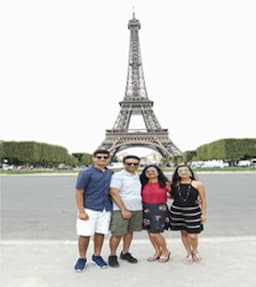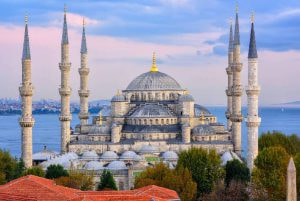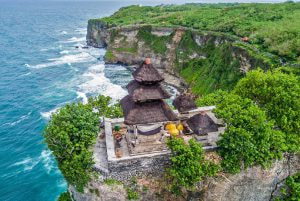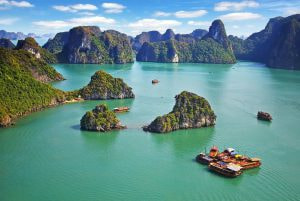History & Culture in China
Did you know these facts about China?
-Football (soccer) was developed in China
History
China is perhaps the structure of Asian civilization, as support of human settlements along the Yellow River Valley that date back to thousands of years. The country became unified by its First Emperor, Qin Shi Huang, in 221 BC. Fifteen years later, China embraced a new dynasty led by Emperor Han, which rose to be the first golden age for the country. Standardized measurement, currency, written symbols, and the invention of significant products like paper and gunpowder helped China experience a period of rapid growth.
For about 2,000 years, a majestic framework was utilized in China, until the fall of the Qing tradition in 1911. This wasn’t an overnight surprise though, as decades prior to their demise colonial powers had begun to tear away parts of the vast empire, such as Hong Kong’s succession to the British, and Taiwan’s succession to Japan.
The Republic of China was founded in 1911 by Sun Yat-Sen, but turbulence followed as the Kuomintang (KMT) and Chinese Communist Party (CCP) initiated conflicts with each other. KMT eventually gained control of Eastern China and prior to the Second World War, industrialized, strengthened and globalized cities like Shanghai which quickly became Asia’s grandest metropolis.
During the war with Japan, China surrendered a lot of its northern domain to the Japanese. Brutal massacres occurred, but with the combined KMT and CCP forces, plus allied assistance, China threw off Japanese occupation in 1945. Not out of the woods, civil war between the democratic and communist parties began almost immediately, lasting until 1949. The KMT were defeated and fled to Taiwan. Meanwhile, on mainland China, Mao Zedong’s communist party created the People’s Republic of China on October 1.
Despite an ‘up and down’ economy under Mao’s rule, China remains a communist state even today. Nevertheless, following President Mao’s death in 1978, new leaders began to establish Special Economic Zones and operate decentralized economic policies that helped cities like Shenzhen, Guangzhou and Shanghai develop into powerful market economies. Even though these areas make up the country’s strongest local economies, China is, politically and govern mentally, one of the world’s strictest communist nations.
Tourists will have the option to discover the information about China's history through various destinations the majority of which are in Beijing. Investigate the Forbidden City (4 Jingshan, Qianjie, Beijing 100009) to become familiar with going before traditions, or set aside some effort to see the National Museum (22 Xijiaomin Alley, Xicheng, and Beijing). The Presidential Palace (Changjiang Road, Nanjing, Jiangsu) in Nanjing takes visitors back to China’s Nationalist government, which now thrives upon the island nation of Taiwan.
Culture
The Arts
Chinese art is generally influenced by the country’s rich spiritual and mystical history. Many sculptures and paintings portray spiritual figures of Buddhism, according to the Metropolitan Museum of Art. Many musical instruments are connected to Chinese culture, including the flute like xun and the guqin which is in the zither family.
Eastern style martial arts were also developed in China, and it is the origin of Kung-fu. This fighting technique is based on animal movements and was created in mid-1600s according to the Black Belt Magazine.
Customs and Celebrations
The largest festival of China also called the Spring Festival — marks the start of the Lunar New Year. It falls between mid-January and mid-February and is a time to respect their ancestors. During this 15-day celebration, the locals do something in order to welcome New Year, such as eat rice congee and mustard greens to cleanse the body, according to the University of Victoria. The day is celebrated with fireworks and parades featuring dancers dressed as dragons.
Chinese Food
The historical backdrop of Chinese food in China goes back for a large number of years and has changed from period to period in every district as indicated by climate, amazing fashion and technology, and local preferences.
The "Eight Cuisines" of China are Anhui, Cantonese, Fujian, Hunan, Jiangsu, Shandong, Sichuan, and Zhejiang cooking styles. These styles are individual from each other because of components, for example: atmosphere, topography, history, cooking procedures and lifestyle. For instance, Jiangsu food favors preparing procedures, for example, braising and stewing, while Sichuan cooking utilizes heating. Dim sums are also well-known outside China.
Buddhism
Buddhism has a long history in China and has also been active in shaping Chinese culture and traditions. From the time of Buddhism, China have faced support and even harassment under the various leaders, but the religion has remained strong, and today China hosts the world's largest Buddhist population.
Chinese Buddhism is one of the ancient forms of Buddhism in history and China’s oldest foreign religion which sets in the heart of china. Chinese Buddhists is a great blend of Taoism and Mahayana Buddhism, the latter of which teaches that illumination can be achieved in a single lifetime.
Happy Travellers
Highlights of South Asia journey
Ms. Bharti Patel
 Jan
Jan31st Jan Southeast Asia Tour
Mr. Yayati Patel
 Jan
JanSingapore Malaysia Tour-21st Dec to 31st Dec
Mr. Chetan Gandhi
 May
MayHotel Food And Staff Services Was Very Nice
Mr. Shambahadur Thakur
 Feb
FebWe Love Partnering With You On Our Travels!
Priyanka Desai
 Nov
NovWe Have Enjoyed Our Dubai Trip!
Mr. Rahul Bhasin
 Nov
NovWe Couldn’t Dream Of A Better Vacation Than This!
Mr. Neeraj Amin
 Sep
SepThanks Flamingo Team To Make Our Dream Come True
Mr. & Mrs. Nehal Gandhi
 May
MayThanks For A Memorable Trip To China!
Mr. Nirav Parikh
 Jul
JulAppreciate Flamingo's Services And Travel Again!
Mr. Husein Sama
 Jun
JunTrending travel articles

A New Wonder of the World: The Golden Bridge in Vietnam
An overnight internet sensation and thanks to Instagram - the Golden Bridge in Vietnam is at the top of the travel bucket list for many tourists. Since its opening day - it has topped the global architectural charts. Over the past few years, uniq

Top Maldives Alternatives to Explore Summer Vacation
Post-a-pandemic - thanks to the Bollywood celebrities - the Maldives has been in the travel spotlight. Yes, the Maldives is a surreal place to be - yes, it is the best short-distance foreign country to visit; yes, the Maldives travel experience

Explore the Majesty of the Blue Mosque in Istanbul
The iconic and famous mosque in Istanbul, the Turks call – the Sultan Ahmet Mosque, is known globally as the Blue Mosque. The Blue Mosque in Istanbul received this unofficial name based on the blue tiles that adorn this structure. The blue mosq

Find Out Everything You Need To Know About Gardens By The Bay In Singapore!
One of the most renowned and not to be missed features of Singapore tour Packages is to visit the Gardens by the Bay in Singapore. This garden is an integral part of Singapore Tourism. Your tour of Singapore is incomplete if you do not go to see the

7 Festivals That Celebrate Life in Europe!
For most of us, Europe is synonymous with our summer holidays. Europe conjures images of snow-clad mountains, lush greenery, famous historical sites, and beautiful landscapes. There are infinite options for all – young and old, honeymooners and

Grand Bazaar In Istanbul: All You Need To Know Before Visiting!
Turkey tourism is renowned for its mystical charm, stunning architecture, and rich culture, but your visit to this country will not be a full circle unless you visit the Grand Bazaar in Istanbul. The must-visit spot for any tourist while visiting Ist

Uluwatu Temple Bali – A Guide to Visiting Bali’s Magnificent Sea Temple
Bali is renowned for its beaches, a destination apt for short breaks and honeymoons - but this island of Bali is also famous for its temples. We all know that Uluwatu Temple is one of the most famous temples in Bali. Instead, we could say that Bali

8 Famous Vietnamese Foods to Try On Your Trip!
What’s the purpose of visiting a new country if you don’t experience the local cuisine? The best approach to exploring the nation is to try the local cuisine. The cultural influences of that location are reflected in the food. Likewise to

5 Best Beach Destinations in Europe: Beach Lovers, this one’s for you!
In Europe, you will find some of the most gorgeous cities on the planet. Millions of tourists visit Europe each year to discover its capital cities, like Paris, Barcelona, Berlin, Amsterdam, and Vienna, to mention a few. Europe Tourism is gifted with

The Green Planet in Dubai – An Indoor Rainforest on the Arabian Desert
Dubai - you would have thought about uber-luxury, desert safari, very high temperatures, endless fun, and shopping. But, can you imagine a tropical rainforest in Dubai? On second thoughts - if Dubai can have a Miracle Garden, Ski World in the des
